Plants can be propagated in many ways, each species has its own method. Rooting cuttings is an inexpensive and easy option to get new flowers from the ones you already have. This method allows you to grow a room or garden specimen that is genetically identical to its parent, which means it retains all the characteristics of the variety. Rooting plant cuttings is one of the easier methods. And you don't have to be an experienced gardener to try it.
Advantages of cuttings over seed propagation
The process is very simple and only requires a good clean and sharp cutting tool and possibly a root stimulant to help the roots begin to grow. There are several options for how to root a cutting, but this method is best suited for breeding varietal plants and preserving rare specimens. Sowing seeds does not give such a result. Besidescuttings can get a new plant much faster. Depending on the species, one of several propagation methods is used, ranging from leaf rooting to obtaining seedlings in water. Any of them will lead to success.
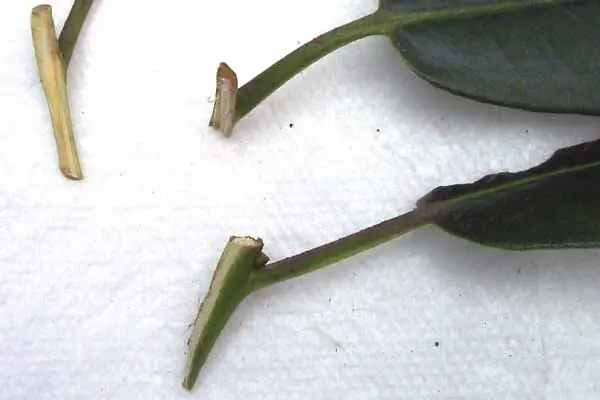
Leaf cuttings
For beginners, it is best to practice on plants that are easy to propagate. For example, sansevieria, also known as "mother-in-law's tongue." This unpretentious and hardy plant is familiar to everyone, because it can withstand almost any conditions of detention. It also has a special ability to purify the air from harmful impurities, which is why it is popular among lovers of useful indoor plants.
Although this flower is considered to be "grandmother's", it can be found not only on the windowsill of an elderly person, but also in offices, medical institutions and various organizations where they do not devote much time to caring for flowers. Sansevieria is distinguished by its decorative foliage, but now its appearance has changed thanks to the work of selectors. More than two dozen new varieties have appeared, many of them with variegated leaves. Such plants are called variegated.
Propagation of "mother-in-law's tongue"
Sansevieria has a beautiful variety whose leaves are bordered with golden stripes. This trait is transmitted only under the condition of propagation by cuttings. It remains only to get a leaf to get a new flower. Before rooting the cuttings of sansevieria, the shoot should be divided into several parts. Having cut the sheet, it is desirable to mark with angular cuts where thebottom end. Then you need to dip it in a root stimulator, place it in moist soil and wait patiently. Soon, young shoots will appear next to the parent leaf. You can root cuttings both in spring and at any other time of the year. This plant is unpretentious and readily reproduces even in adverse conditions. It is not necessary to cover the flower, it reproduces well at normal humidity and room temperature.
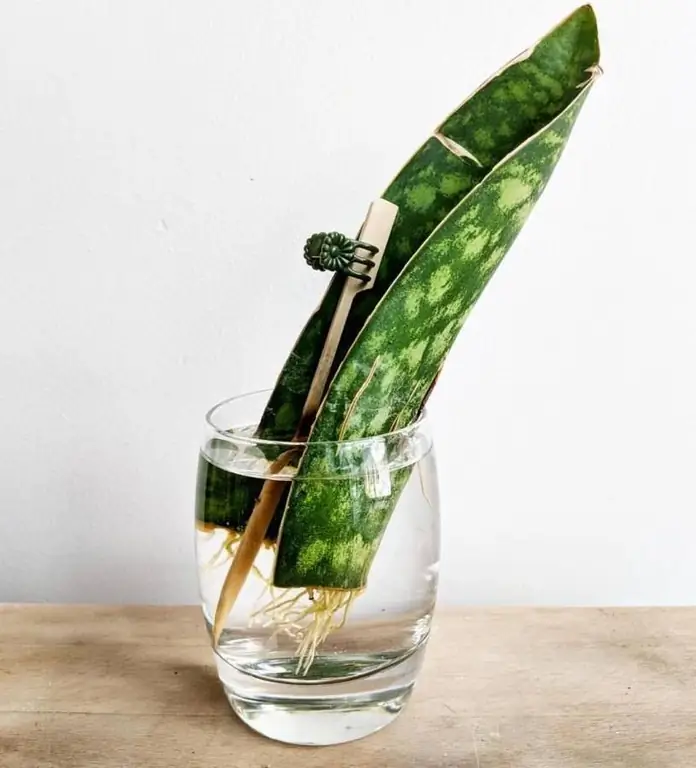
Stem cuttings
But not all plants can be propagated this way. Sometimes a leaf is not enough and a branch with a few buds and a bunch of leaves is needed. There are two common ways to root cuttings: in water or in the ground. Both options are often used, but the first method is not suitable for all plants. Rooting a cut cutting can be as simple as a leaf, but sometimes special conditions or substrate may be required. For example, for the propagation of conifers, a shoot about 10 cm long is usually cut at the end of winter or in spring. For this, branches of the second and third order are used.
Rules for grafting conifers
If the variety is variegated, then the cuttings are cut from the more illuminated side, and in pyramidal plants, branches are taken from the inside of the crown. This is done with a sharp object in a special way so that the so-called “heel” remains on the branch. It is necessary for successful rooting.
Shoots of conifers are placed in wet sphagnum moss or dropped into the ground, depending on the conditions and type of plant. Before rooting the cutting with thisway, a he althy conifer is selected that is able to tolerate pruning well. But sometimes the separation of the shoot is necessary in a diseased plant that cannot be saved in any other way. So it will be possible to save a rare variety or rejuvenate your favorite conifer, the life of which is coming to an end.
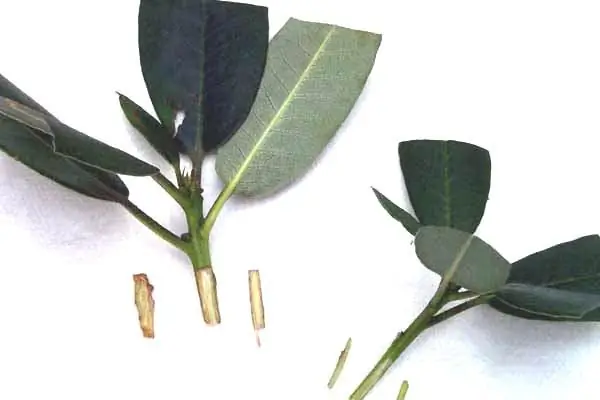
Rooting a cutting from a diseased plant
Weakened instances need special treatment. Before rooting a cutting from a diseased flower or tree, it must be kept in a solution with a disinfectant. It is selected, depending on the disease. For example, with fungal infections, Fitosporin and other similar fungicides are used.
After that, the cutting is placed in a solution of stimulants, such as Epin or Zircon. Such treatment helps plants cope with stress and eliminates infections. Then you should carefully remove the lower leaves and sprinkle the cut with a root stimulator. Now you will need a pencil to make a hole in the soil where you will plant the cuttings so as not to accidentally remove the powder from the tip. After that, it remains to place the stem in the hole and sprinkle the stem with earth.
Optimal conditions for successful rooting
Before rooting cuttings at home, you need to find a place where there will be no exposure to direct sunlight. Some plants need special temperature and humidity for rooting, so the shoots are placed in a greenhouse, covered with a bag or jar to create optimal conditions. For small plantsfor this it is convenient to use special bags with a clip or with a clasp. But ordinary cellophane will do. The shelter is opened or removed every day for a few minutes to ventilate and remove drops of condensate, which can lead to excessive moisture and rotting of the plant.

Care for cuttings
Irrigation is not usually required as water does not evaporate in a closed space. But if the earth is still dry, it can be moistened with a spray bottle. You can understand that the cuttings have taken root, if you gently pull on the stem. Resistance will mean success. But this option is not always desirable - some flowers have very delicate roots, and by constantly pulling on the tops, they can be broken off. It is best to wait until new shoots appear - this will definitely mean that the cutting has successfully taken root. Then young plants are gradually accustomed to fresh air, slightly opening the greenhouse each time for a longer period. When it gets used, and the foliage no longer loses turgor, the shelter can be removed.
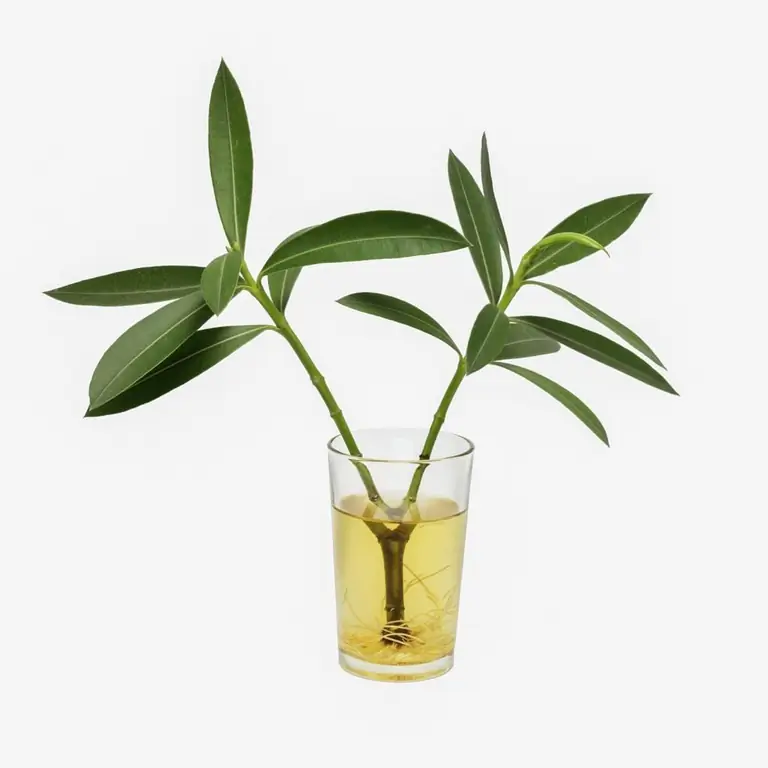
Rooting in water
Less time consuming and easier among inexperienced flower growers is another option for obtaining new plants that uses a humid environment. For it, aqua soil or ordinary water is used. Many plants propagate easily this way, but there are exceptions. For example, for grafting violets, you should know a few important rules, otherwise it is very easy to lose a rare variety, seduced by an easier way.rooting.
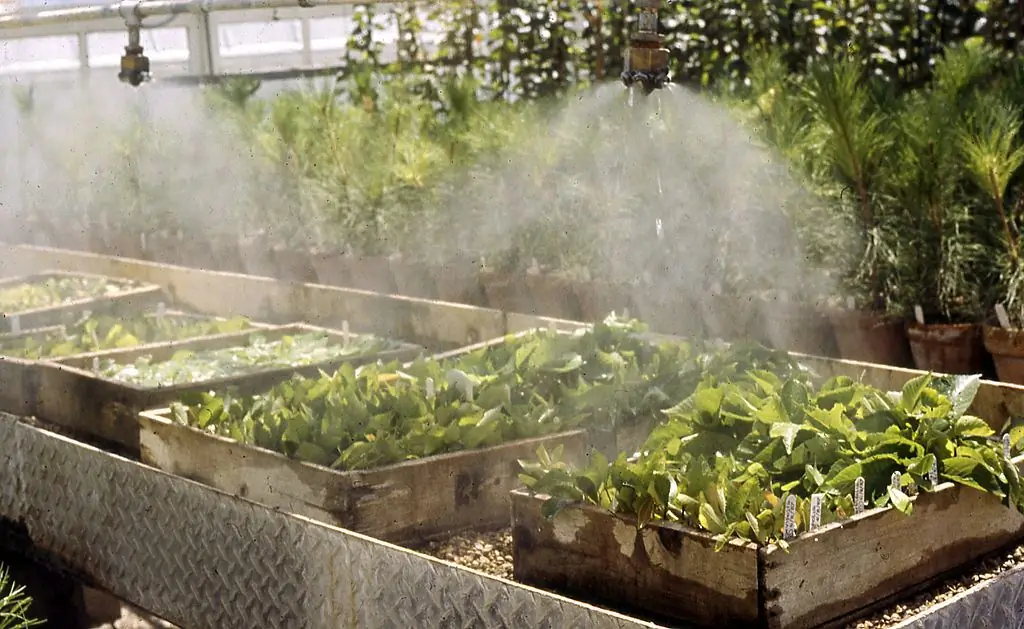
The leaf is most often used to propagate these indoor flowers. But an important condition for the successful rooting of such a cutting is an oblique cut made with a sharp object at an angle of 45 degrees. You should also constantly monitor the purity of the water and not allow them to rot, which happens very often. If this nevertheless happened, the damaged part is cut off at an oblique angle, and then put back into clean water. Successfully rooted cuttings of violets are transplanted into the ground and waiting for a new outlet to appear. It usually grows at the base of the leaf.
After rooting the stalk turned out, it is placed in a permanent place. But cuttings in the soil under the greenhouse are more optimal. Some varieties are able to take root if the leaf is simply placed in the soil and not covered with anything. But usually these are nondescript plants with a hardy character that are not very attractive for lovers of the exotic. Therefore, using soil is the best way to root the cuttings of such a flower. Modern varieties are more tender and harder to breed.
How to root currant and grape cuttings at home
Propagation of garden plants is an important part of the work of a summer resident. If you know how to do it right, it becomes easy to get a new bush of your favorite variety or share it with your neighbors. Plants such as currants and grapes are especially often propagated.
In the first case, you can use the water method, but the liquid does not change until the roots appear, but sometimes topped up, according tomeasure of evaporation. The same option is used for hydrangeas. Cuttings are cut from adult he althy plants over the age of 7 years. Before placing the stems in an opaque jar of water, they are kept for a day in growth and root stimulants. Then water with neutral pH is poured and exposed to diffused light. Roots appear after about 20 days, after which the cuttings are transplanted into open ground.
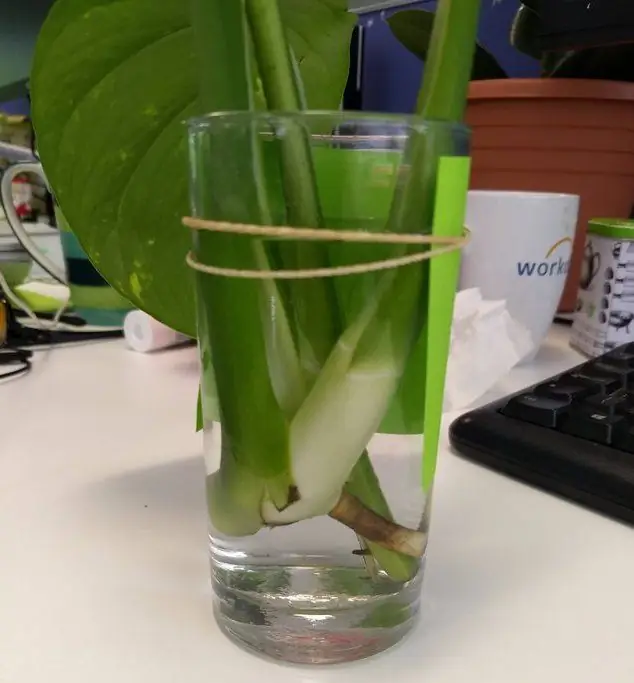
The way to root grape cuttings at home is similar to the currant option. Only a transparent jar is taken for this, and cotton wool is placed on the bottom, which should protect the cuttings from drying out if the water level drops too much. To ensure that there is enough liquid in the container, you need to constantly monitor.
One more important condition: the lower part of the handle should be warm, and the upper one should be cool. The easiest way to achieve this is to put the jar on a warm window sill, but next to an ajar window. Roots usually appear after two weeks. If this did not happen, but the buds began to bloom, they are removed. When the length of the roots reaches 1 cm, it's time to transplant the cuttings into the ground.






